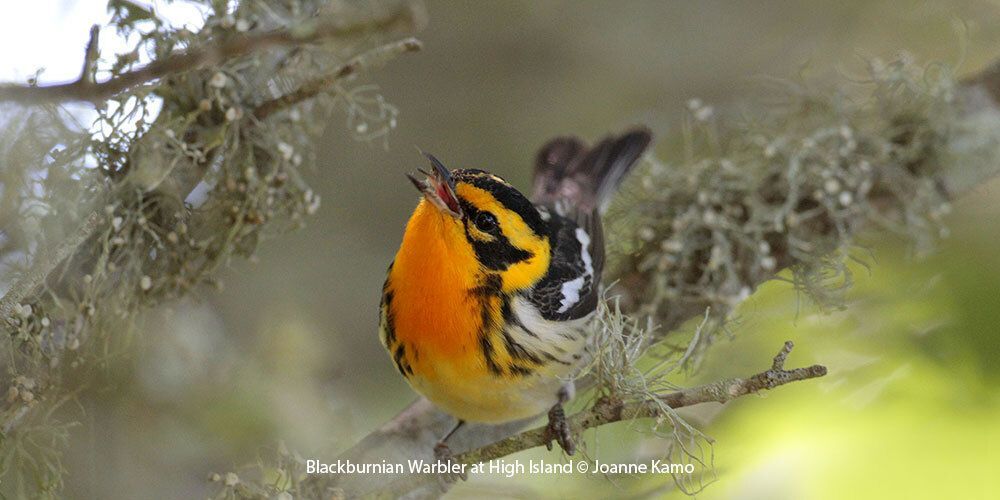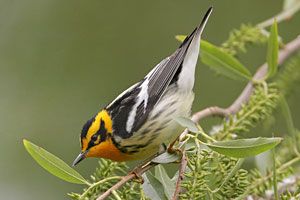
© Greg Lavaty
Blackburnian Warbler
Setophaga fusca
Family: (Parulidae) Wood-Warblers
Preferred Habitat: Woodlands.
Seasonal Occurrence: Spring and fall migration.
Profile by Glenn Olsen: There are many rewards for spring “warbler neck” and one of my favorites is seeing the Blackburnian Warbler. While searching the green leaves of a live oak for spring migrants, I have been rewarded to see the brilliant, fire-orange colored throat of this beautiful warbler. The Blackburnian is one of our most colorful, and distinctive warblers. Wintering as far south as the northern half of South America, we see this colorful warbler in spring migration as the males and females migrate to breeding grounds in southeastern Canada, the coniferous forests of the northern states and south in the mountains of the Appalachian Trail. The male of this species is not easily confused with any other bird due to the bright red-orange coloring of the chin, throat and face. The upperparts are blackish and the wing has a large white wing patch. Coloring on the females on the other hand is more subdued. Usually the chin, throat and face are yellowish with only a hint of orange and the colors are not bright as in the male. Females may be confused with a few other warblers if one is not paying close attention. During spring migration do not let warbler neck cut your birding day short and miss the opportunity of seeing this almost glow-in-the-dark warbler! Get out and go birding.
Profile: The Blackburnian Warbler is a small songbird with a bright orange throat and face with a black crown, broad white wingbars, and a triangular ear patch. Females and juveniles are paler and yellower overall. They have a thin call that increases in speed that sounds like sleet-sleet-sleet-sleetee-sleeeee. They live in woodland areas, specifically conifers in the summer and humid mountain forests in the winter.
They eat mostly insects and especially enjoy caterpillars. During summer they will eat many caterpillars and sometimes beetles, ants, flies, and spiders. During winter they will branch out and feed on some berries as well. Blackburnian Warblers feed mostly in treetops, looking for insects along small branches. They will also search in dead leaf clumps or hover to take insects from the underside of leaves. Males tend to forage higher in the trees than females.
Blackburnian Warblers will court the female by singing and performing displays fluttering his wings and tail. The nests are placed high in dense vegetation near the ends of branches. It is a cup-shaped nest built from twigs, bark, conifer needles, and moss. Their nesting behavior is difficult to observe due to the height of nests. The female will usually have a clutch size of four greenish white eggs with blotches of brown. Both the parents care for the nestlings. Blackburnian Warblers spend the winter in South America and migrate across the Gulf of Mexico north.
-
Cornell Lab of Ornithology
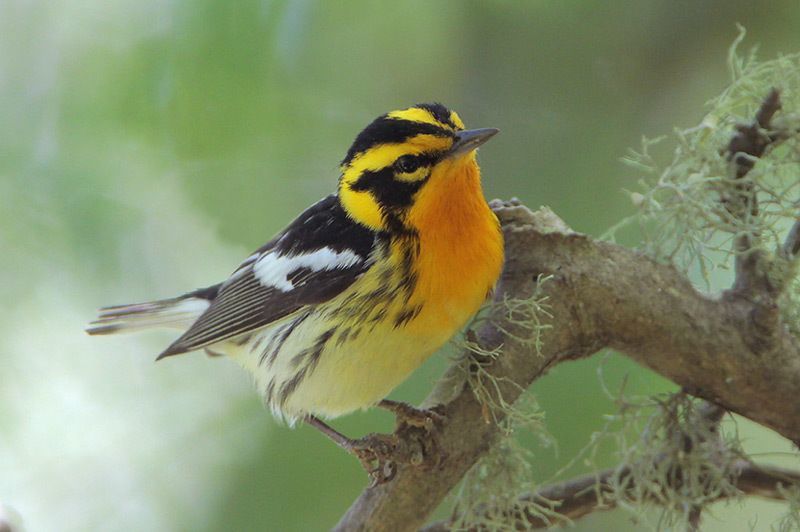
© Greg Lavaty, www.texastargetbirds.com
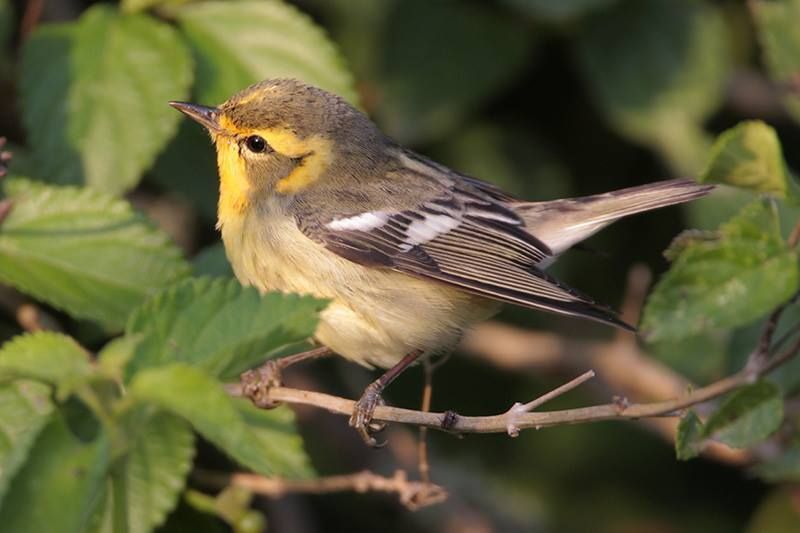
© Greg Lavaty, www.texastargetbirds.com
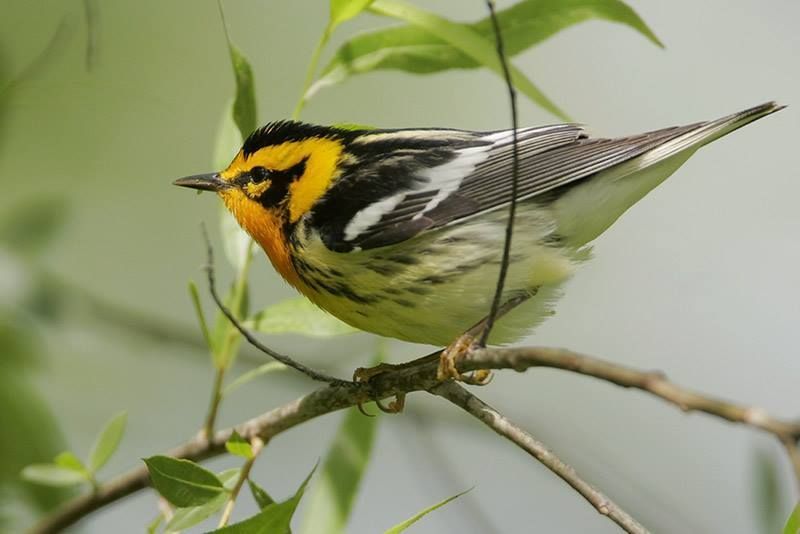
© Greg Lavaty, www.texastargetbirds.com

